Building A Strong Social Media Strategy For Business Growth written by John Jantsch read more at Duct Tape Marketing
Marketing Podcast with Andrew Barlos
 In this episode of the Duct Tape Marketing Podcast, I interview Andrew Barlos. He is the Head of Marketing at Loomly, a leading social media management platform. He has a history of success in the B2B SaaS, software, healthcare, fintech, human resources, consulting, and employee benefits technology industries.
In this episode of the Duct Tape Marketing Podcast, I interview Andrew Barlos. He is the Head of Marketing at Loomly, a leading social media management platform. He has a history of success in the B2B SaaS, software, healthcare, fintech, human resources, consulting, and employee benefits technology industries.
Key Takeaway:
It’s important for small businesses to invest in building a dedicated social media team that focuses on a select few platforms where their target audience is most active. It is important to test with different social media content and formats to see what works better for each specific brand, but the key takeaway is to keep being authentic. Furthermore, building trust and establishing an organic presence is essential in social media marketing.
![]()
![]()
Questions I ask Andrew Barlos:
- [02:25] What would you say are the hottest things right now for business use on social media?
- [03:57] What would be your best advice for a small business with little money to invest?
- [04:59] What platforms should B2B focus on?
- [09:29] How do you advise people to get into and use social media knowing that they won’t necessarily produce immediate measurable ROI?
- [10:29] Do you think video is the content format that everybody should use the most?
- [13:34] What role is AI playing today in social media and the different ways of using it? Where do you see it going?
- [16:32] What does Loomly do and what are its core features?
- [18:55] Talking about scheduling on social media. Is this feature affecting people’s authenticity or maybe even algorithms with different platforms?
More About Andrew Barlos:
- Start your free trial of Loomly
- Connect with Andrew
More About The Agency Certification Intensive Training:
- Learn more about the Agency Certification Intensive Training here
Take The Marketing Assessment:
- Marketingassessment.co
Like this show? Click on over and give us a review on iTunes, please!
John Jantsch (00:00): This episode of the Duct Tape Marketing Podcast is brought to you by Nudge, hosted by Phil Agnew, and it’s brought to you by the HubSpot Podcast Network, the audio destination for business professionals. You ever noticed how the smallest changes can make the biggest impact on Nudge you learned simple evidence, back tips to help you kick bat habits, get a raise, and grow your business. In a recent episode, Phil tested a thousand dollars on some marketing principles, some work, some don’t. Uh, guest Nancy Har Hut, who’s been a guest of the show as well. And Phil put these principles to test in a set of real life experiments. You’ll learn what works and what doesn’t. Listen to Nudge wherever you get your podcasts.
(00:52): Hello and welcome to another episode of the Duct Tape Marketing Podcast. This is John Jantsch. My guest today is Andrew Barlos. He’s the head of marketing at Loomly, a leading social media management platform. It’s got a long history of success in the B2B SaaS, software, healthcare, FinTech, human resources consulting and employee benefits technology industries. So, Andrew, welcome to the show.
Andrew Barlos (01:17): Yeah, it’s kind of been a, a diverse background, hopped around a little bit, but I’m stronger because of it. Thanks for having me, John.
John Jantsch (01:24): You bet. So here the burning question I wanna start out with, is the Loomly icon logo icon a cat or not?
Andrew Barlos (01:32): That’s a great question and something we need to do a better job describing on our website. Probably it’s a double entendre actually. So when Loomly was created, the tagline was a social media manager’s best friend, and that was, you know, obviously a cat that comes across your desk, gets in the way of your camera all the time. So there’s the, the cat icon that kind of symbolizes that we’re your partner on your desk, just like your cat. They’re also two chat bubbles, so just symbolizing, you know, commenting interactions on social media as well.
John Jantsch (02:03): Yeah, awesome.
Andrew Barlos (02:07):
John Jantsch (02:08): I’m glad we started there. Yeah. So let’s talk about trends. I guess, you know, when you talk about social media technology in general, I think, you know, things are changing rapidly, uh, for folks, and I think one of the, in fact, one of the biggest frustrations is that, you know, for a lot of businesses, just hard to catch up. So what, uh, if you were gonna list maybe two, three of kind of the hottest things right now, you know, for business use of social media, what would you say those are?
Andrew Barlos (02:36): I, I’d say it, it, it depends where you’re at in the journey. I’d say for a lot of small businesses and growing businesses, number one, overall is the need to build out, not just the social media manager as a, a owner of everything, but also a department there. You can’t expect to grow and manage, like you mentioned, there’s so many updates across all the algorithms, all the different channels that you’re expected to be on. It’s impossible for even one person to manage, let alone a small team. So the number one thing I would say was invest in them, cherish them there. It’s a tough world out there, especially when you’re asked to be, have a consistent presence on eight different social channels. So that’s one overall.
John Jantsch (03:21): Okay.
Andrew Barlos (03:23): The next one is you gotta build in video. Obviously TikTok has proliferated quite a bit. A lot of brands, both large and small, have seen massive success. Even brands that you don’t expect, like the Wall Street Journal mm-hmm.
John Jantsch (03:53): All right. So let’s dial back the department thinking for a minute. Let’s say I’m a small business, I don’t even have a marketing department, let alone a social media team. And so I think that, so, so what would be your best advice for somebody like that? Because they just can’t do it all. So, you know, how do they get bang for what little buck they can invest?
Andrew Barlos (04:13): Hmm. Do more with less channels
John Jantsch (04:43): So I know the ultimate answer to this next question is, it depends, but would you say that there are, if generically somebody came to you and said, I’m a B2B business, or second person, I’m a B2C business, would you say, oh, well you probably should be focused on these channels. So for b2b, you know, what platforms I should say, should generically say they should be focused on?
Andrew Barlos (05:05): Definitely, uh, uh, the big boys haven’t gone anywhere. You know, Facebook, LinkedIn, specifically for B2B and Instagram. I mean, you could tell most companies, like you need to have a consistent presence there, but that’s changing. You know, more and more B2B businesses are shifting to exploring audiences on TikTok. Mm-hmm.
John Jantsch (05:43): So, so b2c, I’m guessing you’re saying same thing, Facebook is still there for them, you know, maybe Twitter’s there for them, but TikTok is certainly, and Instagram are both channels that they need to be really exploring all the various ways to create content.
Andrew Barlos (05:57): Yep, absolutely. If you’re not, if you’re a B2C company and you’re not leveraging short form video on Instagram and TikTok, you, you, uh, drop everything and, and start that now. And, you know, I I, that’s intimidating and I’m not a outward facing guy, you know, I don’t wanna be the, the face and and record videos as we hired an excellent social media manager who started to produce some great results for Loomly. But the good thing is nowadays, it doesn’t have to be that intimidating. It’s all about authenticity. Yeah. And just being yourself and telling your story and what performs better on those platforms is actually not this great production value video. People wanna connect with your story and who you really are. So that’s tough to do sometimes to be vulnerable like that. Yeah. But the good thing is it’s, you know, anybody can do it.
John Jantsch (06:47): Yeah. It’s pretty interesting. I, I’ve noticed that across the board even on, excuse me, even on, you know, you’re like lead magnets, you know, you’re trying to get somebody to opt in for something almost today. It needs to look like an internal, you know, internal like process document or something, as opposed to this polished, glossy thing. Cuz people are thinking, oh, that’s, you know, I can just, that’s like behind the scenes something I can grab that’s not like something you produced.
Andrew Barlos (07:11): Yeah, yeah, that’s a good point with
John Jantsch (07:39): And, and I think certainly most people would suggest that is absolutely true. And yet, you know, there are a lot of brands that are looking at social media as a new lead gen channel. Would you say that, would you say that? Well, the answer is definitely yes. It can be a lead gen channel
Andrew Barlos (08:07): Great. It’s like any brand building, you know, you need to establish trust first before you start asking for them to convert. And, uh, you can’t ask for a conversion on a first touch. You know, one thing, once you have a library of org of different types of organic content that you’ve tested, video, graphics, carousels, whatever it may be, once you know it works organically with your audience, that’s what you take and then turn into a high performing ad. So those are the posts that you boost, those are the types of content that you scale and then put those into your ad uh, campaigns. The organic data is the best type of data because, you know, obviously you haven’t paid to get it yet. So that’s what we’ve started to do is, you know, do, even if it’s something simple, like let’s say you’re a solopreneur or a small business and you don’t have the whole ads campaign set up and multiple team members to run it, we picked like a few high performing organic posts and just boost those in TikTok and Instagram and you know, that’s a great way to expand your audience with stuff, you know, it’s gonna work.
John Jantsch (09:12): So, so there’s one, uh, school of thought that says really social media is more what marketers call top of the funneling. You know, it’s where you get exposure or it’s where people come to know about you. For some people that’s not enough, you know, because they need some sort of result today. So what do you know, how do you advise people get into and use social media with sort of the realization that it’s not necessarily going to produce immediate measurable roi?
Andrew Barlos (09:41): Right. It’s a long-term game. And if you’re not ready to, that’s where it’s difficult. You know, I led off by saying hire social media manager best in that team. It’s difficult too, cause it’s not a one-to-one roi, but if you’re looking to build a successful brand over time and not have to have, you know, each conversion, each lead be paid and build that organic presence, just like a content strategy, you need to have social media content over years, you know, months and years at every level of the funnel too. So obviously brand awareness is number one, but then, you know, you loop in some converting content as well, similar to any other content strategy.
John Jantsch (10:23): So you, I think just about at the top, talked about video, almost all of the platforms now are, you know, have some, you know, some way in which you can post videos. So would it be fair to say that’s the content format that everybody should lean into the most?
Andrew Barlos (10:41): I, I wouldn’t say the most. Cause it, again, it depends, right?
John Jantsch (11:43): And now let’s hear a word from our sponsor. You know, companies are under pressure right now. I mean, pressure to get more leads, close deals faster, get better insights to create the best experience for customers. A CRM can help, but not just any crm. One that’s easy to set up, intuitive to use and customizable to the way you do business. And that’s where HubSpot comes in. HubSpot’s CRM is easy for everyone to use on day one and it helps teams be more productive. Drag and drop your way to attention grabbing emails and landing pages. Set up marketing automation to give every contact white glove treatment. Plus AI powered tools like content assistant mean less time spent on tedious manual task and more time for what matters. Your customers HubSpot CRM has all the tools you need to wow prospects lock in deals and improve customer service response times. Get started today for free @hubspot.com.
(12:47): Hey, marketing agency owners, you know, I can teach you the keys to doubling your business in just 90 days or your money back. Sound interesting. All you have to do is license our three step process that’s gonna allow you to make your competitors irrelevant, charge a premium for your services and scale perhaps without adding overhead. And here’s the best part. You can license this entire system for your agency by simply participating in an upcoming agency certification intensive look, why create the wheel? Use a set of tools that took us over 20 years to create. And you can have ’em today, check it out at dtm.world/certification. That’s dtm.world/certification.
(13:34): So here’s a question that I’m sure nobody has asked you. What role is AI playing today in social media? Content production, scheduling, hashtagging, I mean, all the various components. It seems like it’s crept in largely and there’s two, two camps. I think there’s the one that’ss like, oh, it’ll do it all for us. And then the one, you know, the other camp that’s, it’s a research assistant, so, you know. Yep. I’d love your thoughts on where you see it today and maybe where you see it going.
Andrew Barlos (14:06): Well, yeah, it, it’s incredible and it’s, you know, what I say today may not be relevant a week from now with how fast things are advancing. Yeah, yeah. You know, I’m kind of in between the two camps. I think from a social media perspective, there’s lots of things that it can help get you jumpstarted on. You know, the easy one is caption writing, right? Mm-hmm.
(14:49): So I get a couple ideas for a format of a blog or an email or a social post. Then I take those ideas, okay? That’s how I can structure my thoughts. The number one thing I keep preaching those authenticity do not, I would not recommend any form of AI content to be your all in strategy and just do that. Close your eyes and let that go because it’s gonna be generic inherently, you know, but it’s definitely a tool that anybody in marketing and social media should be experimenting with. And I know, you know, that’s something that we’re looking into across the board. You know, number one, caption writing, again, like it pretty straightforward thing, but there’s all different types of research listening, other types of ways AI can be applied, which we’re really excited about.
John Jantsch (15:35): So one of the uses that I think is very effective right now is kind of working backwards, taking content that is already been well written, well researched in your voice and ask it to extract, you know, from that or to rewrite for a shorter format or something like that. And so it’s, you’re not gonna get the clumsy generic stuff as much because you’ve already, you know, you’ve really fed it great content already to, to extract. We take, you know, we’ll have somebody do an interview, you know, testimonials, you know, that kind of stuff. And it’ll be 10 minutes of them just babbling and we’ll say, you know, get me a couple great quotes out of this. And it, yeah, I could go through it and do it too
Andrew Barlos (16:22): Yep, a hundred percent. It’s a great way to repurpose content. You have a strong blog, white paper, whatever, like turn this into however many social posts. Yep, absolutely.
John Jantsch (16:32): So let’s pause on, on the conversation, uh, from my end and just maybe give, uh, you know, a minute or two about, not a pitch for Loomly necessarily, but just like, yeah, here’s what Loomly does that Sure. You know, that, that are kind of the core features and, and how people use it.
Andrew Barlos (16:51): Sure, yeah, absolutely. So Loomly’s a all in one, easy to use social media management platform where you can upload your social media assets, create review, optimize your posts, schedule them, and then automatically post them to all your social accounts. So we talked about having to manage eight different accounts. I don’t know how anybody does it without a scheduling tool like Loomly, especially when you wanna push for post consistency. What Loomly does a little bit differently is we were actually built as an agency to client, um, a collaboration tool. So with custom workflows, review process, approval process and custom user roles, that made us a really great tool for agencies, large teams. But at the same time as they built out the scheduling and calendar component, it was very simple, easy to use, no bells and whistles, but any client, even small businesses or non-experts can adopt it. So it’s great for small businesses, small teams too. And so, you know, we’ve grown quite a bit with a very, you know, lean team and we’re super customer-centric and that, that feedback loop we’ve established with our customers to, for them to vote on different features has really driven a lot of what we’ve done with our product and a lot of our success.
John Jantsch (18:15): How is that feature request that actually shocks the client if they don’t approve quickly? Is that coming along
Andrew Barlos (18:22):
John Jantsch (18:54): So talk to me a little bit about the scheduling, uh, feature. And I do, uh, I, I appreciate completely that, you know, you can write a month’s worth of content cuz that’s what you do on, you know, Monday or Tuesday or whatever of, of the month. And then, you know, you put it out there and you know, it posts on the date. Is there any, is there any sense that feature by itself or that practice by itself, you know, is hurting people’s authenticity or maybe even algorithms within, you know, within the, you know, various platforms?
Andrew Barlos (19:25): Yeah, that’s a great question. There’s been a couple studies, there’s been some anecdotal things like, hey, you know, why aren’t my schedule posts performing as well? There’s also been anecdotes where my schedule posts perform better, and there’s been a couple studies out there that showed there wasn’t a direct correlation and we haven’t seen that across the board, but obviously there’s so many other variables. What are you posting? You know, did you post bland content and schedule bland content? It’s not gonna perform what, in some cases where it can help is what Loomly provides a post inspiration. We’ve just kind of re refreshed that, uh, frequently just to give ideas for different types of content. Like I said, it’s so important to figure out what works, but then there’s also post optimization tips. So like, Hey, make sure this is a little long. Make sure this video’s trimmed, make sure you focus on this.
(20:11): So those reminders, especially across each different platform, uh, can go a long way to, to optimizing, uh, content. But you know what, how I kinda like ai, you know, I wouldn’t say schedule every single post. You know, for example, Twitter, it’s very much a real time platform if you think of, so an idea, you should get it out there and jump on it quickly that day. Yeah. But what it can do is take 50, 60% the schedule, post the brand post what you know is gonna be out there, get that off your plate, and then a social media manager or a marketer can focus on what really you going in social media with, which is like real-time interactions with your audience. Yeah. Talk, meet them where they’re at, comment on things, follow hashtags, and jump in on the conversation and then research, you know, see what your competitors are doing, see what people are talking about, and then you have more time to reinvest that into your strategy.
John Jantsch (21:07): You know, it’s interesting, one of the things we’ve seen with our clients is that, you know, obviously they wanna promote their business objectives in social media, but mm-hmm.
Andrew Barlos (21:31): Yep. A hundred percent. You know, like I said, it’s a, a massive research tool just as much as Google search. You know, it’s funny, we’ll look through our, our attribution software and I’ll see all the touches and it’ll start, it’ll go blog, TikTok, Pinterest, Instagram, you know, sign up, Facebook, Instagram, and then they convert. And it’s, you know, people again, they, like you said, that human authentic content, people wanna work with people. They don’t wanna work with a generic brand. So that definitely goes a long way.
John Jantsch (22:05): Uh, awesome. Andrew, thank you so much for taking some time to stop by the Duct Tape Marketing Podcast. You want to invite people where they might, uh, find you connect with you and I bet you even have a trial of Loomly.
Andrew Barlos (22:16): Oh yeah, ab, absolutely. Yeah. First of all, thanks for having me. It’s been fun. You could start a free trial of Loomly @loomly.com. It’s a full feature trial so you can test everything out, see which plan works for you, uh, follow. We’re either at Loomly or at Loomly Social across all the platforms. And I’m on LinkedIn at Andrew Barlos if you wanna chat with me anytime. Awesome.
John Jantsch (22:37): All right. Well, again, thanks for taking a little time out of your day to chat with our listeners and hopefully we’ll run into you one of these days out there on the road.
Andrew Barlos (22:45): Sounds great. Thanks John. Hey,
John Jantsch (22:46): And one final thing before you go. You know how I talk about marketing strategy, strategy before tactics? Well, sometimes it can be hard to understand where you stand in that, what needs to be done with regard to creating a marketing strategy. So we created a free tool for you. It’s called the Marketing Strategy Assessment. You can find it @marketingassessment.co, not.com,
Sign up to receive email updates
Enter your name and email address below and I’ll send you periodic updates about the podcast.
This episode of the Duct Tape Marketing Podcast is brought to you by the HubSpot Podcast Network.

HubSpot Podcast Network is the audio destination for business professionals who seek the best education and inspiration on how to grow a business.

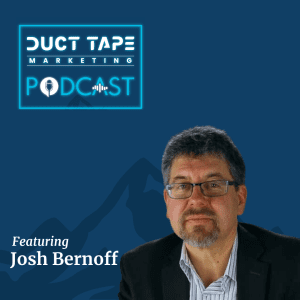 In this episode of the Duct Tape Marketing Podcast, I interview Josh Bernoff.
In this episode of the Duct Tape Marketing Podcast, I interview Josh Bernoff. 

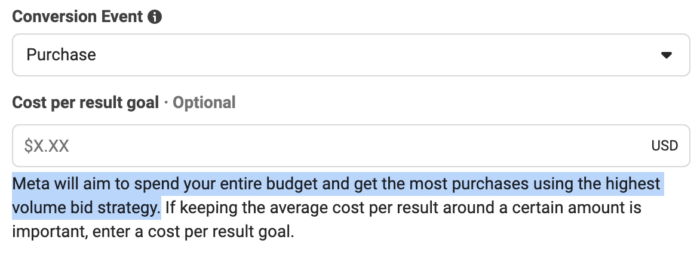
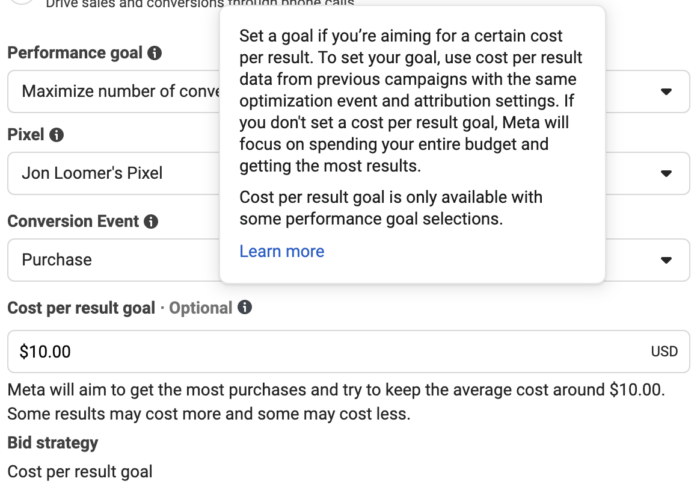
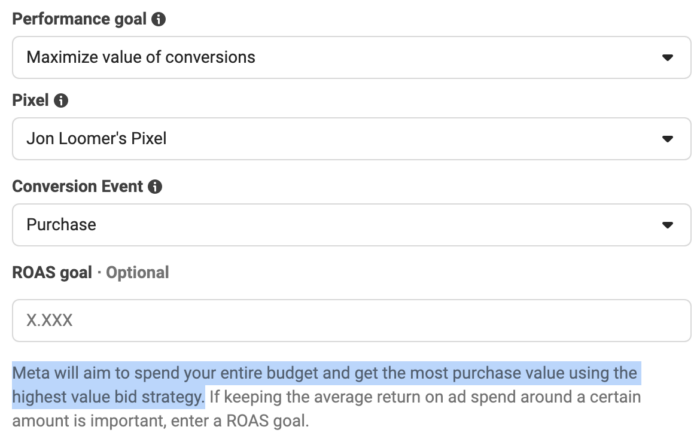
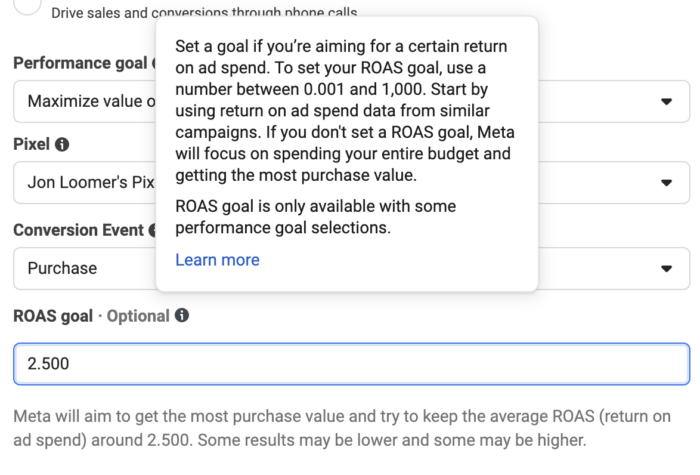
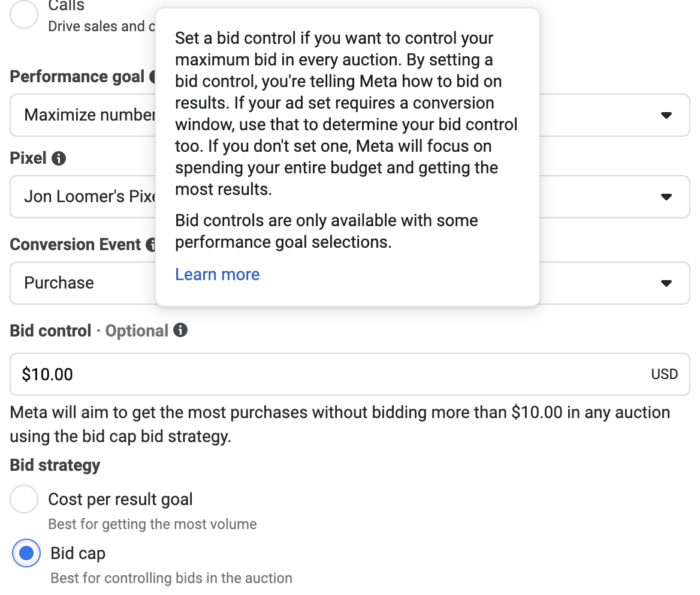
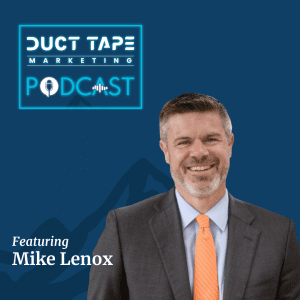 In this episode of the Duct Tape Marketing Podcast, I interview Mike Lenox. He
In this episode of the Duct Tape Marketing Podcast, I interview Mike Lenox. He 
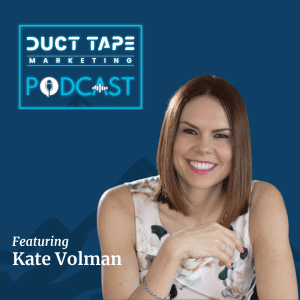 In this episode of the Duct Tape Marketing Podcast, I interview Kate Volman. She
In this episode of the Duct Tape Marketing Podcast, I interview Kate Volman. She 
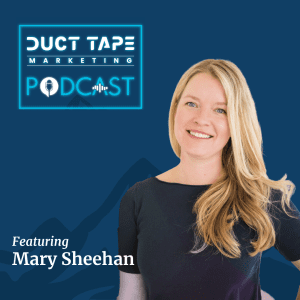 In this episode of the Duct Tape Marketing Podcast, I interview Mary Sheehan. She
In this episode of the Duct Tape Marketing Podcast, I interview Mary Sheehan. She 

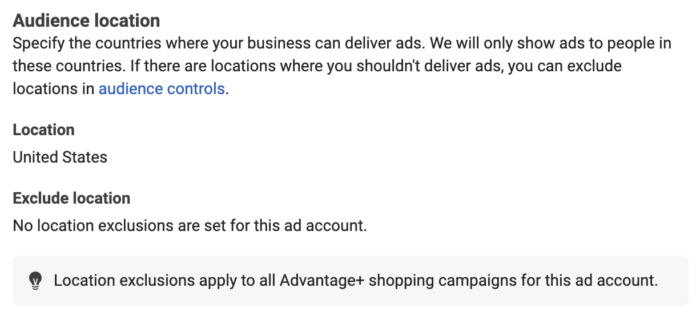


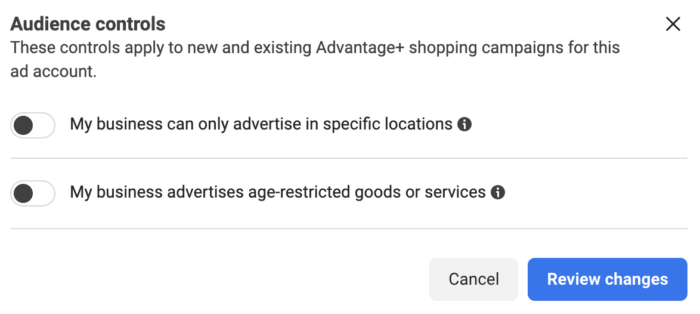
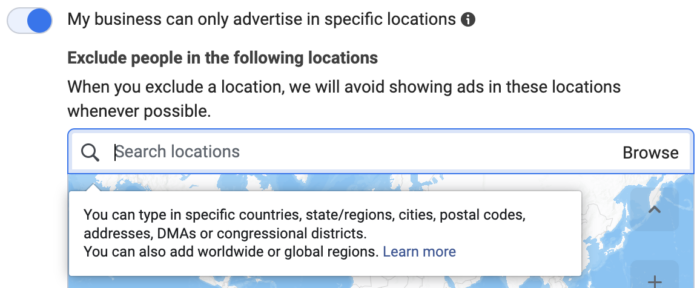

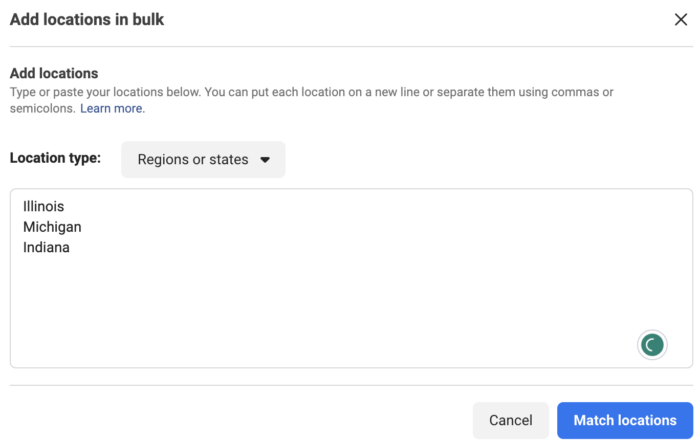
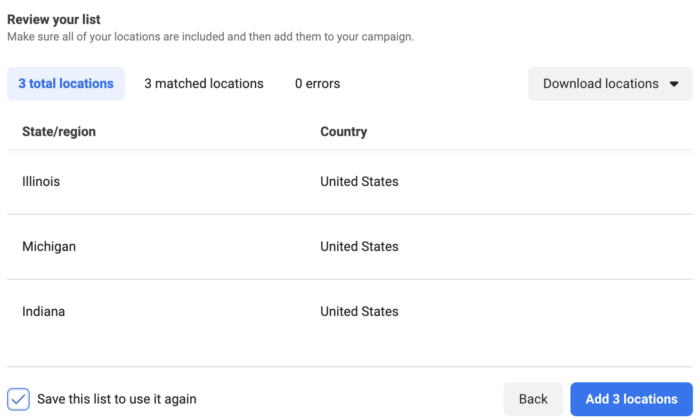


 In this episode of the Duct Tape Marketing Podcast, I interview Tiffani Bova. She
In this episode of the Duct Tape Marketing Podcast, I interview Tiffani Bova. She 
 In this episode of the Duct Tape Marketing Podcast, I interview Liam Martin. He
In this episode of the Duct Tape Marketing Podcast, I interview Liam Martin. He 
